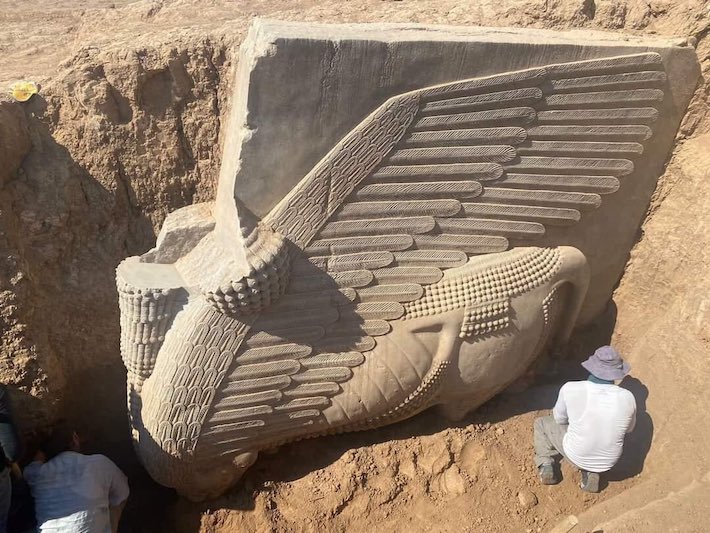 PARIS, FRANCE—Euronews reports that an 18-ton limestone sculpture of a lamassu dated to the reign of the Assyrian king Sargon II, who ruled from 721 to 705 B.C., has been uncovered in northern Iraq by an Iraqi-French team of archaeologists. A lamassu is a mythical creature with a man’s head, the body of a bull, and the wings of an eagle. Such sculptures served as symbols of intelligence, strength, and freedom. This one was first recorded in the nineteenth century at the entrance to the ancient city of Dur-Sharrukin (present-day Khorsabad). Although the head is now detached from the rest of the sculpture, it is believed to have been recovered from looters in the 1990s and is currently housed in the Baghdad Museum. “The rest of the body was found here and is in excellent shape,” said Pascal Butterline of Sorbonne University. “We can now study the whole context of this beautiful gate which might still be in very good condition,” he explained. For more on lamassu decorations, go to "Rise of the Persian Princes."
PARIS, FRANCE—Euronews reports that an 18-ton limestone sculpture of a lamassu dated to the reign of the Assyrian king Sargon II, who ruled from 721 to 705 B.C., has been uncovered in northern Iraq by an Iraqi-French team of archaeologists. A lamassu is a mythical creature with a man’s head, the body of a bull, and the wings of an eagle. Such sculptures served as symbols of intelligence, strength, and freedom. This one was first recorded in the nineteenth century at the entrance to the ancient city of Dur-Sharrukin (present-day Khorsabad). Although the head is now detached from the rest of the sculpture, it is believed to have been recovered from looters in the 1990s and is currently housed in the Baghdad Museum. “The rest of the body was found here and is in excellent shape,” said Pascal Butterline of Sorbonne University. “We can now study the whole context of this beautiful gate which might still be in very good condition,” he explained. For more on lamassu decorations, go to "Rise of the Persian Princes."
Headless Lamassu Sculpture Uncovered in Iraq
